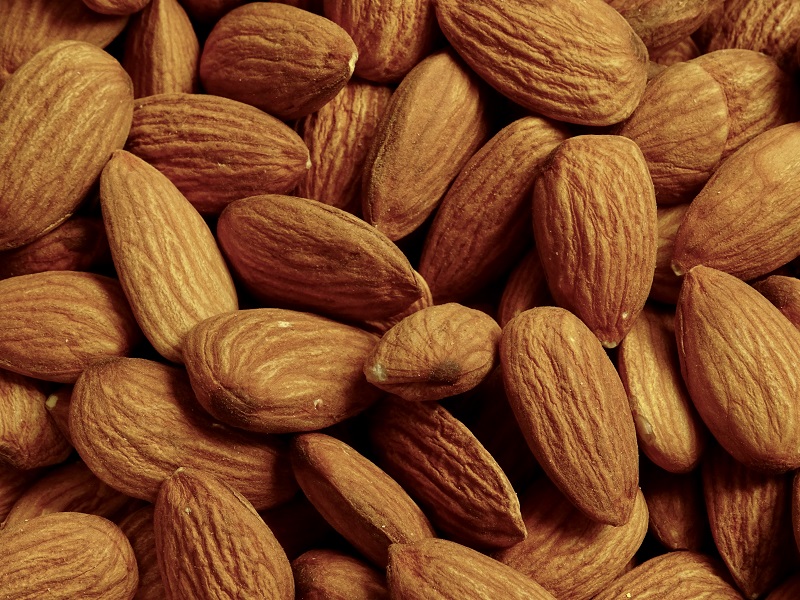Good Bugs Helping Grape Growers Win Against Weeds
Beneficial insects typically battle bad insects. That is almost always the biocontrol storyline out of vineyards and orchards. Case in point: The Palisade Insectary, in Palisade, CO, was established in 1945 to help local peach farmers fight oriental fruit moth. Its original facility was even dubbed “The Bug House.”
Almost 80 years later, John Kaltenbach, a Biological Control Specialist with the Colorado Department of Agriculture (CDA), is here to remind growers, particularly vineyardists in this case, that beneficial insects are also tasked to hold their own against a different but equally problematic pest — weeds.
Presenting to a Colorado State University Extension audience, Kaltenbach singled out some of the state’s most prominent vineyard weeds while promoting the best biological counteragents that the CDA’s Palisade Insectary offers to growers:
Bindweed Gall Mite (Aceria malherbae)

Photo by Photo: USDA ARS , USDA Agricultural Research Service, Bugwood.org
“Probably the biggest problem that growers have in their vineyards is field bindweed. It is a noxious weed, but it’s pretty much everywhere. It’s just a hard plant to control, similar to morning glories. Our best agent for field bindweed is a microscopic Aceria malherbae. It is a galling mite. The mites overwinter in the roots. In late August or early September they start migrating their way toward the roots. I have seen over in Grand Junction plants that are gnarled, that barely come out of the ground because of the galling that the mites can cause. They also seem to work better in drier conditions. When the field bindweed has a lot of water, it seems to grow and kind of slough off any of the galls. It might take some effort to see if they work in a vineyard.”
Field Bindweed (Convolvulus arvensis)
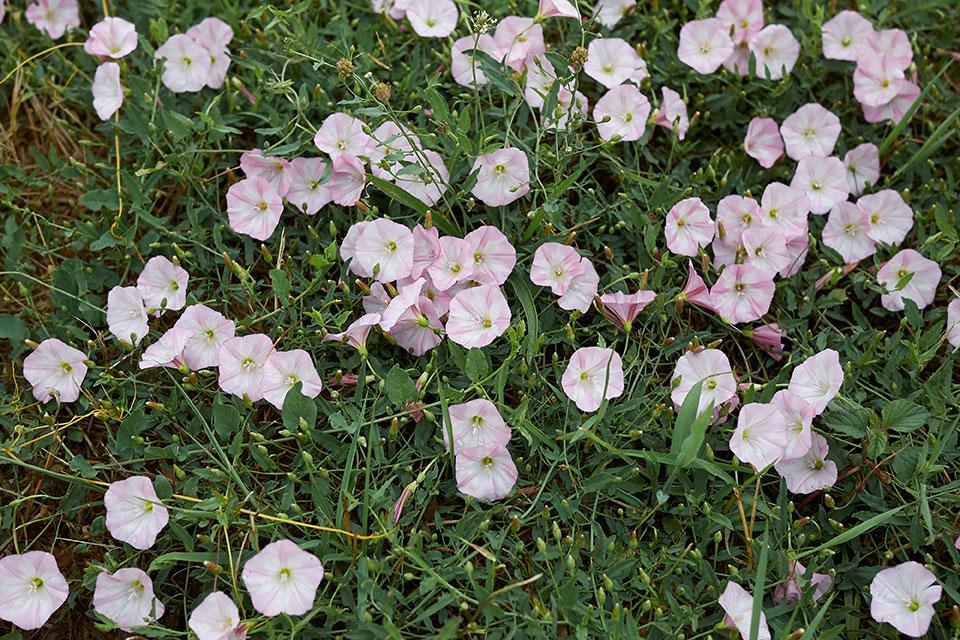
Photo: Simona – stock.adobe.com
Canada Thistle Rust Fungus (Puccinia punctiformis)
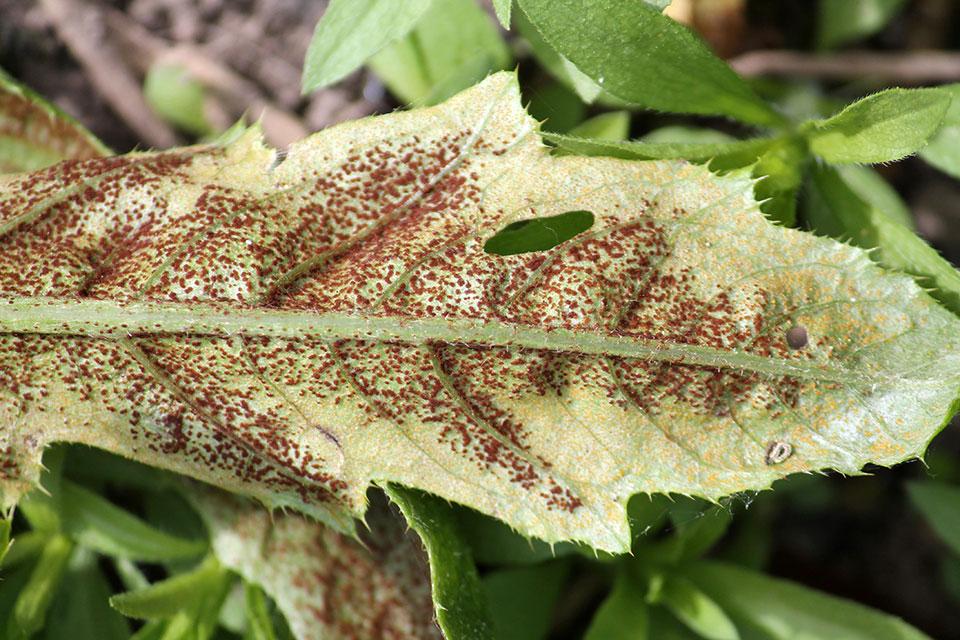
Photo: kazakovmaksim – stock.adobe.com
“Canada thistle is probably one of the worst weeds around the world. We have a rust fungus that we started working with around 10 years ago. It’s a very effective agent. It was the first plant pathogen suggested as a biocontrol agent way back in 1893. We’ve figured out how to work with it within the state. Unfortunately, there are some discussions going on between the EPA and USDA at the federal level, and basically USDA would like to get back the regulatory control of this rust fungus. So we’re kind of in a holding pattern. Eventually we will get to use it again. It’s a very effective agent at controlling Canada thistle.”
Canada Thistle (Cirsium arvense)
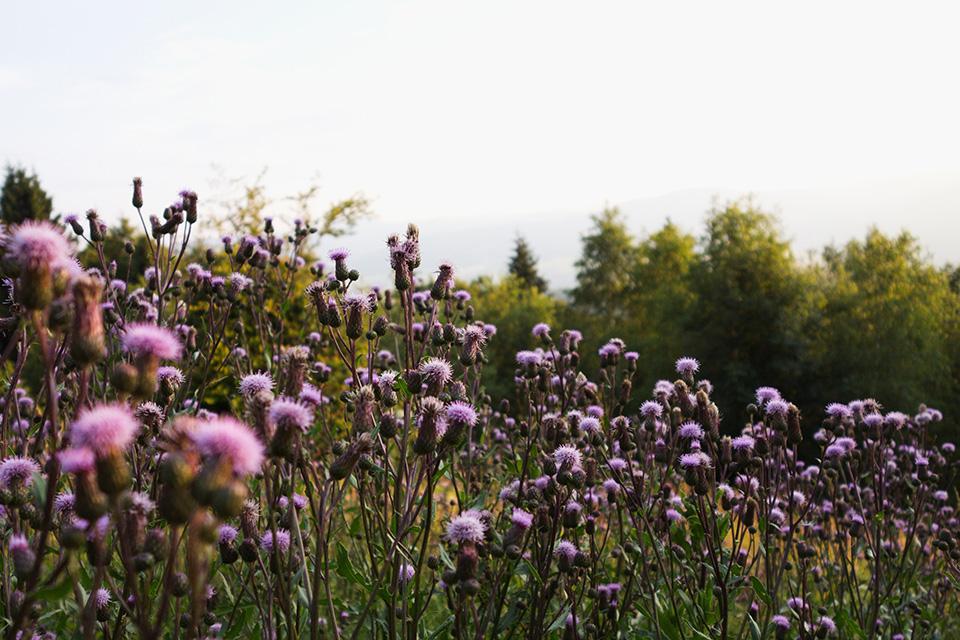
Photo: 3dillustrations – stock.adobe.com
Gall Wasp (Aulacidea acroptilonica), Gall Midge (Jaapiella ivannikovi)

Photo: Sandra Standbridge – stock.adobe.com
“Russian knapweed is one of our growing problems in the state as a noxious weed. It can survive in a variety of soils. It outcompetes other things and is a very difficult plant to control with herbicides. We do have a couple of agents that are now available for this. Gall wasps were introduced in the last 10 years in Colorado. They’re pretty small wasps. Gall midges lay their eggs in the terminal growing end of the Russian knapweed. A gall basically is a physiological response of a plant. The larvae of an insect is growing, and the plant forms this massive tissue around it that is called a gall. Within a gall could be 20 of the midge larvae in there, maybe more.”
Russian Knapweed (Rhaponticum repens)
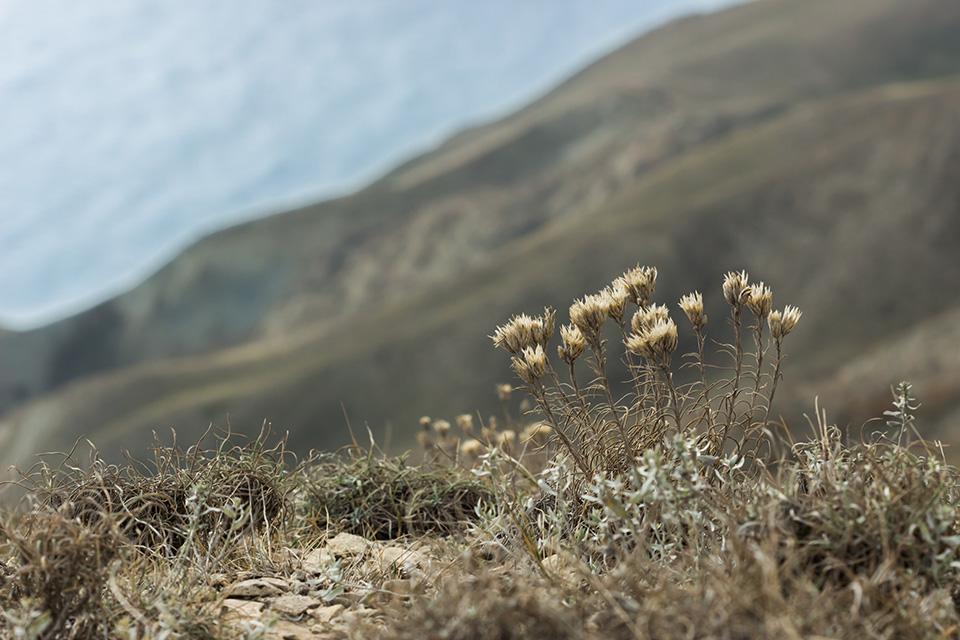
Photo: Elena Volgina – stock.adobe.com
Seed Weevil (Microlarinus lareynii), Stem Weevil (Microlarinus lypriformis)
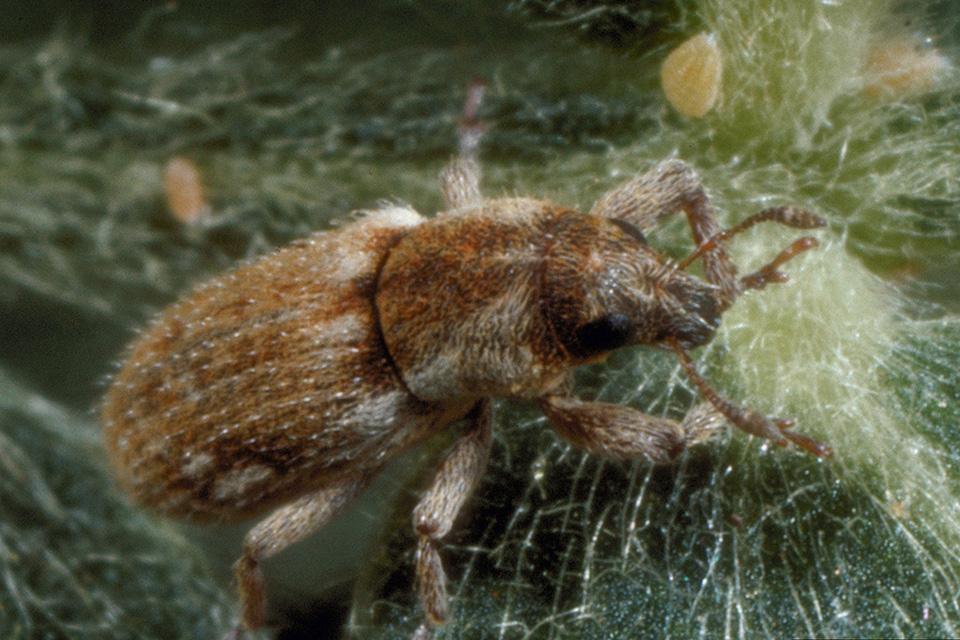
Photo: USDA ARS – European Biological Control Laboratory, Bugwood.org
“These were originally released in the 1960s and were not found north of Amarillo, TX. It was thought that they were not cold hardy, but then some CDA employees found it down in Baca County in 1978. Since about 2010, we’ve actually been able to collect most of our puncturevine weevils from the Denver metro area. Either we have a cold-hardy strain or climate change has changed things. I would say we definitely don’t have the deep freeze we used to have. We used to have a couple weeks at a time where we wouldn’t get above zero (degrees), and that would really do a good number on some pests and would also kill off something like these agents. Puncture vine doesn’t compete with other plants too well, so cover crops are something to keep in mind.”
Puncture Vine (Tribulus terrestris)

Photo: Albin, stock.adobe.com
Lesser Knapweed Weevil (Larinus minutus), knapweed root weevil (Cyphocleonus Achates)
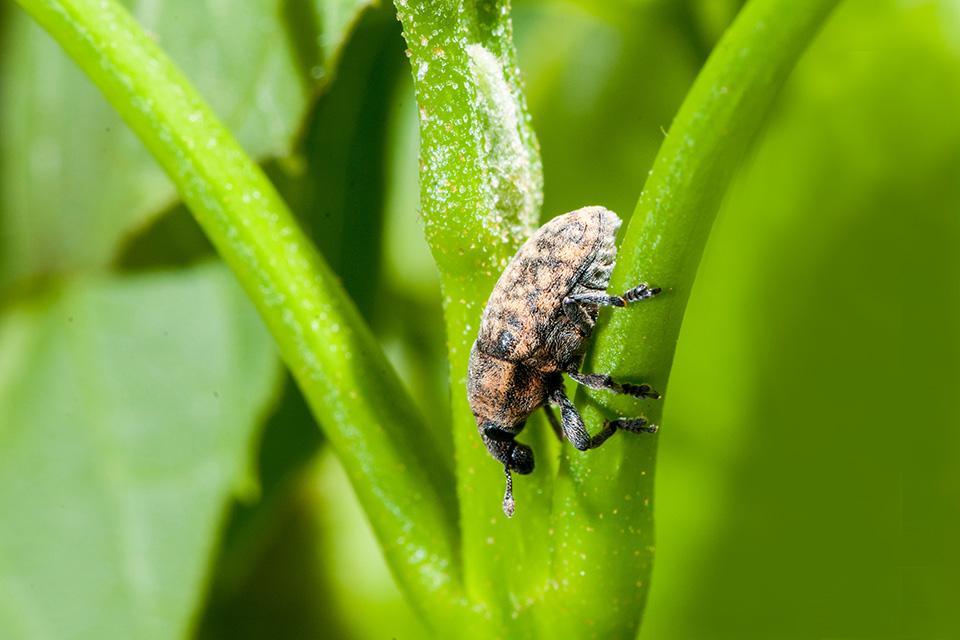
Photo: silukstockimages, stock.adobe.com
“The lesser knapweed weevil lays its eggs in the seed head, and larvae carve out the seed head. It prefers diffuse knapweed over spotted but will feed on both. The larvae of knapweed root weevil feed on the roots, reducing flowering and the ability of the plant to grow. It can kill plants eventually and is pretty effective, although we don’t get very many of those to redistribute. It’s my favorite insect. It’s pretty big; about the size of a pinto bean. August is their month to be out and about. It’s kind of camouflaged when it lays on the ground.”
Diffuse Knapweed (Centaurea diffusa), Spotted Knapweed (Centaurea maculosa)
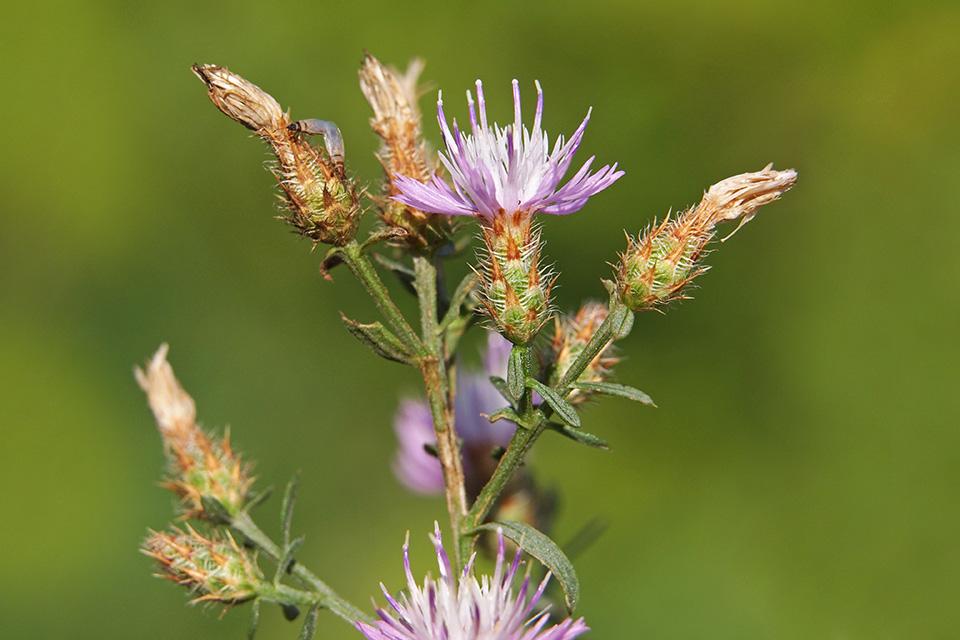
Photo: emilio100, stock.adobe.com
Rosette Weevil (Trichosirocalus horridus)

Eric Coombs, Oregon Department of Agriculture, Bugwood.org
“Also a root weevil, it feeds right in the root crown of the thistle and can kill musk thistle. We actually have been having trouble collecting this one. Most of these agents we’re talking about, what we do is rear them in what we call nursery sites. We go out to field areas and release them and go back in subsequent years and hope that the population has built up enough to collect them and redistribute them in those areas. But with musk thistle, a lot of our areas where we’ve tried to use them at nursery sites, they’re so effective that they wipe out the musk thistle, and we have had limited T. horridus numbers the last couple of years.”
Musk Thistle (Carduus nutans)
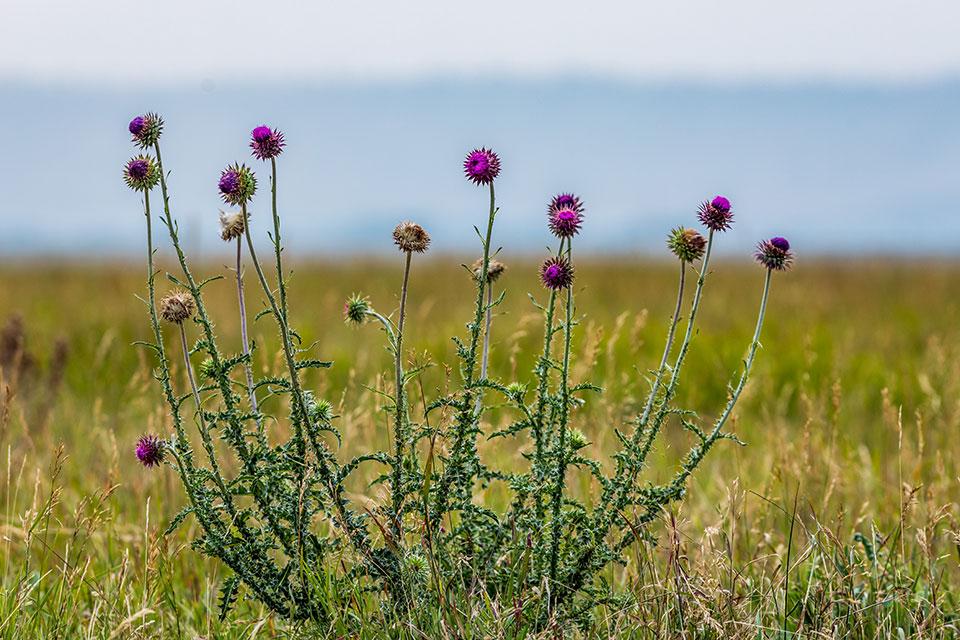
Photo: Mark Lotterhand, stock.adobe.com







